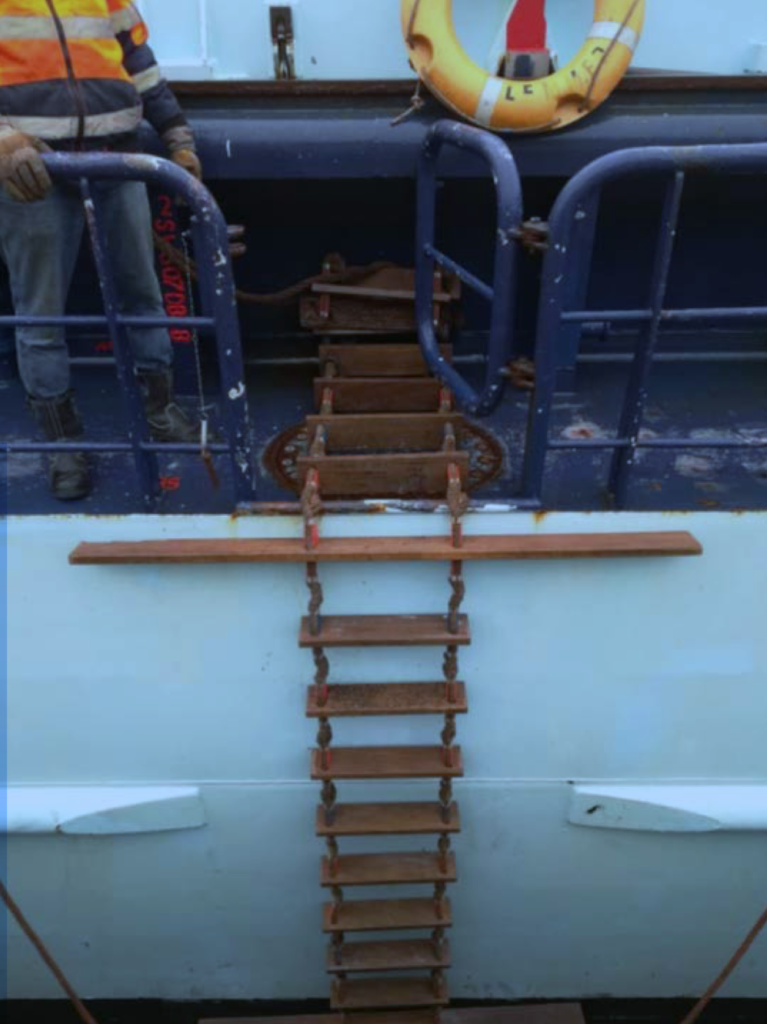
On December 17th, the German BSU (Bundesstelle für Seeunfalluntersuchung) published a report on the near fatal accident of a Kiel Canal helmsman, while boarding the Dutch flagged vessel MARFAAM.
The reports finds that the pilot ladders’s handholds ( stanchions) onboard of the MARFAAM were inadequate, and could only be reached from deck level. An in-depth research into the regulations is made in the report.
The main findings in the report are:
The lack of – internationally binding – adequate handholds at the MARFAAM’s gateway was the reason for the accident involving the canal helmsman and the two pilots nearly falling from a height. In particular, both this and the other accidents that have come to light were caused by the fact that
- – lacking handholds were not identified but the pilot embarkation point certified as appropriate by a classification society acting on behalf of the flag State2;
- – this situation was not identified subsequently during a port State control inspection;
- neither pilots nor canal helmsmen rated this deficiency as a threat to the safe navigation of the MARFAAM or potential threat to the environment and therefore failed to report it to a vessel traffic service (VTS) for specific scrutiny during a port State control inspection.
The investigation revealed many other hazards of a fundamental nature associated with the use of pilot embarkation points, which can be reduced if the safety recommendations are observed. In particular, they include an
- – absence of occupational health and safety standards for canal helmsmen and pilots and unclear responsibilities, respectively.
- – absence of specific international requirements for the adequacy of handholds at pilot embarkation points with a gateway;
- – absence of a culture of reporting dangerous pilot embarkation points to VTSs, and
- – absence of sufficient implementation and enforcement of existing internationally binding rules for pilot transfer arrangements.
You can download the very readable full report here:

